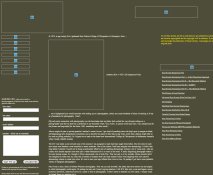One Paper - Many Grades
I find graded papers too limiting. I usually fine-tune image
contrast to 1/4 grade and sometimes down to 1/8 grade. Also,
the creative opportunities of variable-contrast paper is something
I would not like to miss. Having available different grades of
contrast in one sheet of paper opens a world of image
manipulation.
VC papers exist solely because of their ability to display a range
of contrasts. In my view though they do so in a faulting manor.
I know there are some darkroom work arounds used to
correct it's faults.
I went with VC back in the 50s. I was a strapped student at the
time and couldn't afford two or three 250 sheet boxes of Graded.
I know very good prints can be made from VC papers. Those that
are strapped for funds and willing to put up with less than a very
well lighted darkroom won't go wrong using VC.
Varying the contrast of any one grade of Graded paper is easy
to do via a few methods; contrast control developers, pull
processing, lith development, and David Kachel's SLIMT.
The later two allow for many grades of paper from
one grade.
David Kachel's paper Variable Contrast from Graded Paper
details the SLIMT method. I've found the method to yield
phenomenal results. He has termed it SLIMT but believe
PEPDB; Post Exposure Pre Development Bleach, to be
more descriptive. Dan













